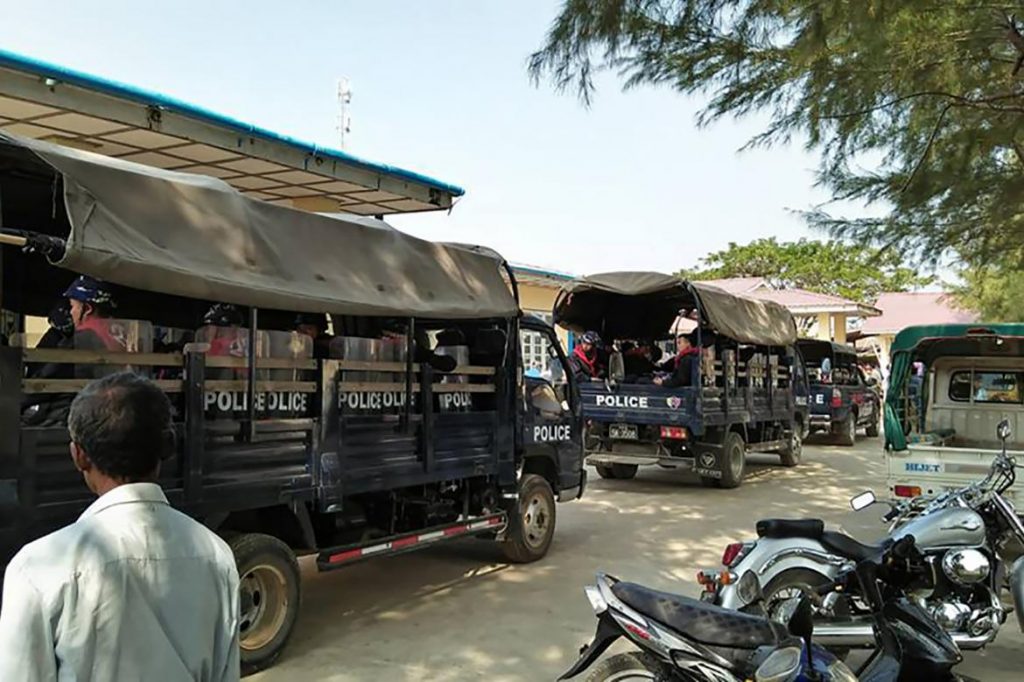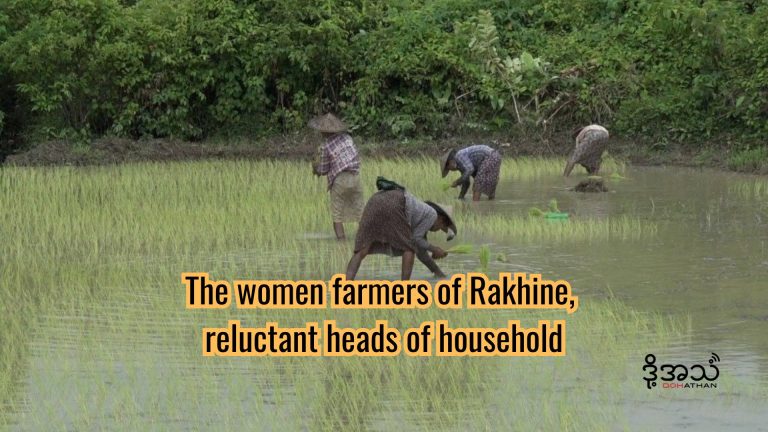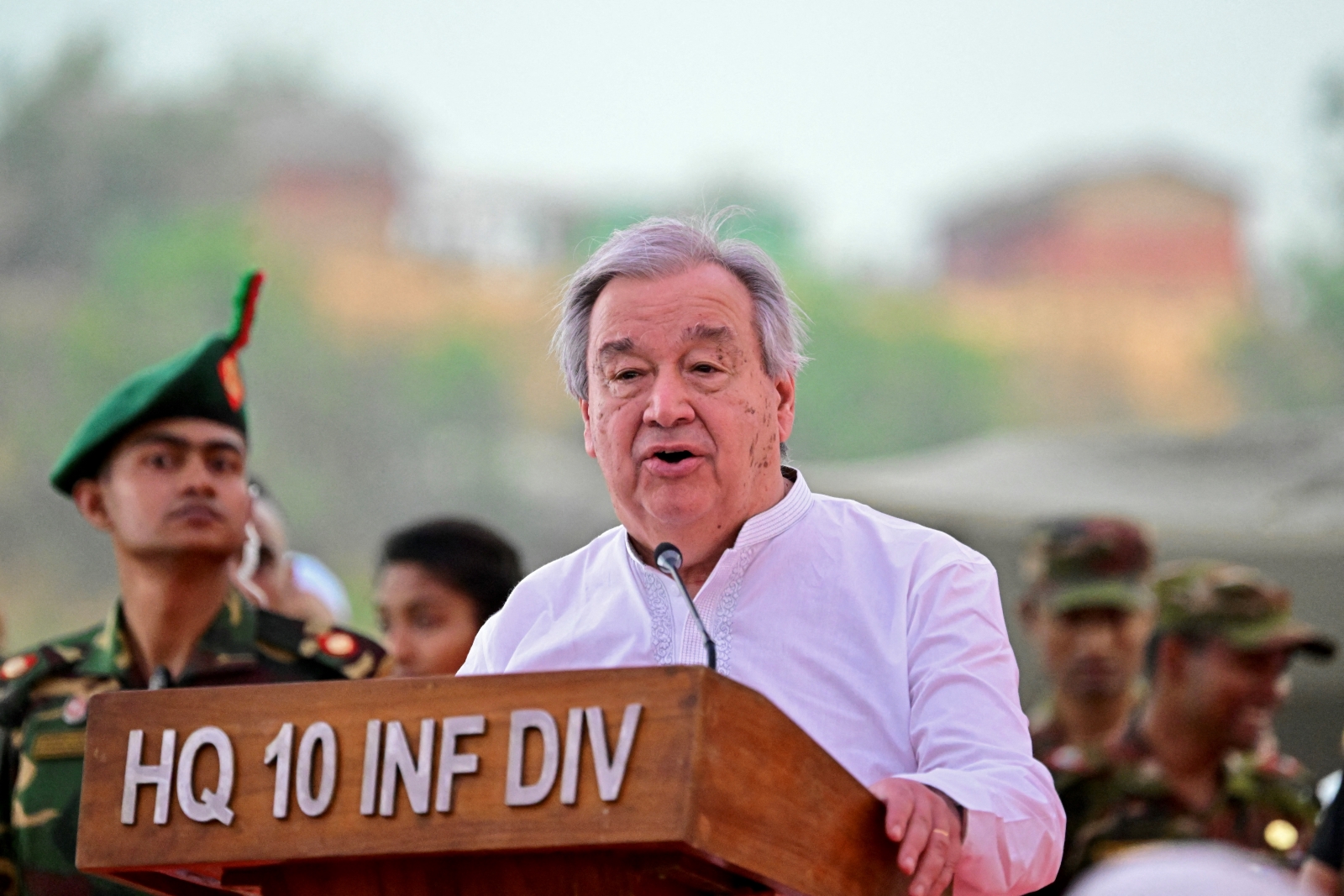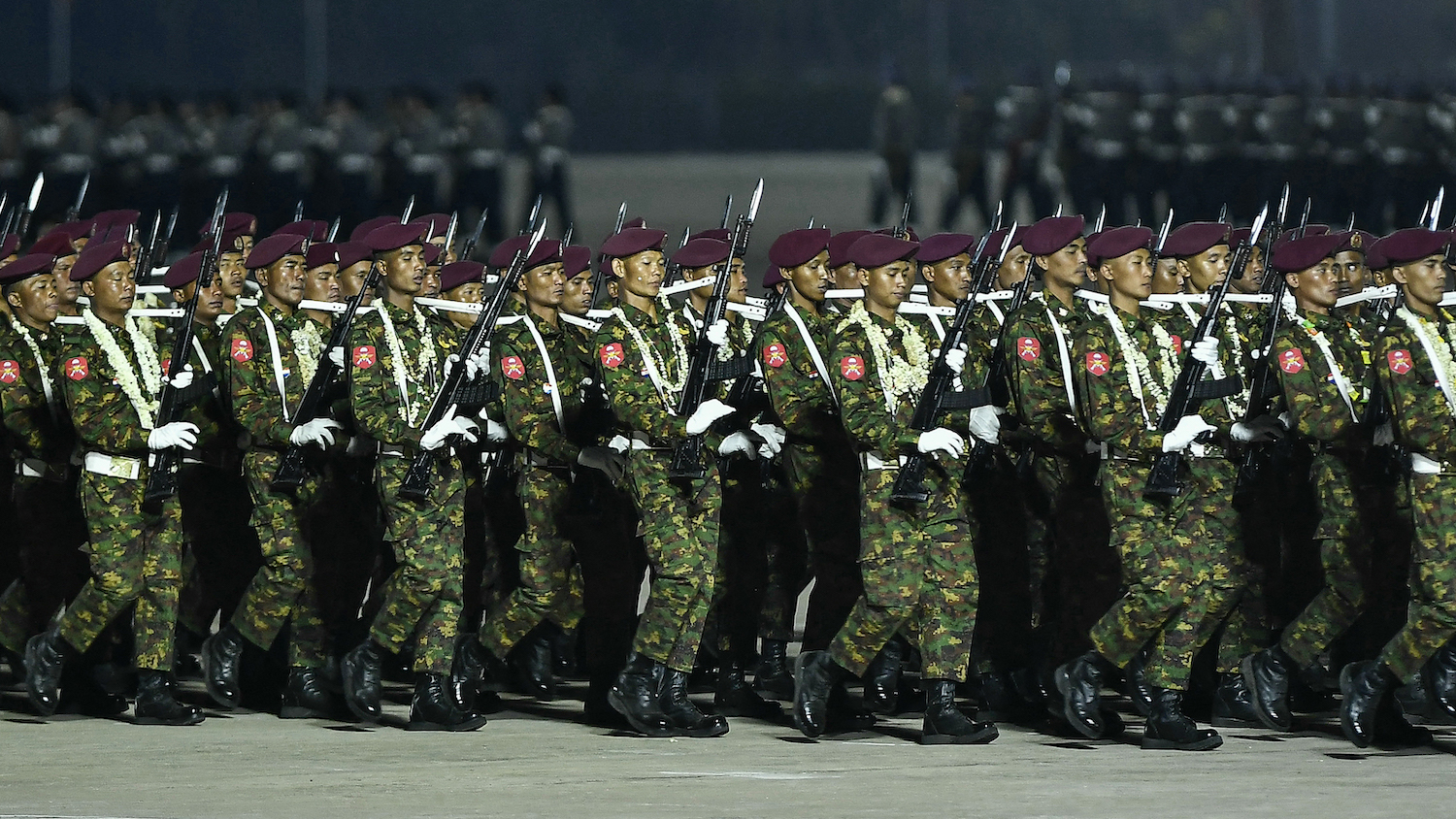By MRATT KYAW THU | FRONTIER
SITTWE – Rakhine State remains the centre of attention for all the wrong reasons after a police crackdown on protests at Mrauk U on January 16 left at least eight people dead. Tensions were heightened even further after two prominent Rakhine figures were also arrested for a January 15 speech deemed critical of the government.
On Monday there was a heavier than usual police presence at Sittwe, Mrauk U and other Rakhine townships after the arrests of writer Wai Hun Aung and former Arakan National Party chairman Dr Aye Maung on January 16 and 18, respectively.
The arrests came after the pair had addressed a crowd in Rathedaung, northern Rakhine State, where they accused the Bamar-majority government of treating Rakhine people like “slaves”.
According to an evening bulletin by the state broadcaster Myanmar Radio on January 17, Aye Maung is alleged to have made a call for greater sovereignty for the Rakhine community and discussed the need for armed struggle, an apparent reference to the Arakan Army insurgent group.
Support more independent journalism like this. Sign up to be a Frontier member.
Wai Hun Aung was arrested at Sittwe the following day, and hours later Aye Maung was prevented from entering Mrauk U, where he was due to make a speech to commemorate the 233rd anniversary of the fall of the Rakhine empire, which had its capital at Mrauk U. That evening, authorities announced that the event had been cancelled, and Aye Maung was arrested two days later in Sittwe.
Late on January 16, Frontier received information that thousands of protestors were gathering in Mrauk U, first in the downtown area close to the city’s ancient temples, then later at the General Administration Department office in Htamaraz Ward, about four kilometres from downtown. According to witnesses, the protestors destroyed property including a motorbike and plastic chairs, after which police fired into the crowd.
U Khine Moe, a joint secretary of the ANP, said he saw seven dead bodies in a morgue at Mrauk U hospital, and had been told of another body being transferred to the hospital in Sittwe, the state capital.
He told Frontier that several police trucks had been dispatched to Mrauk U from Sittwe, with many officers stationed at the town’s hospitals, where local residents and family members of the deceased had gathered on January 17, demanding that the bodies be released.
While authorities initially said that only 10 gunshots had been fired, the Rakhine State government admitted at a press conference in Sittwe on Monday that 20 shots were fired.
Rakhine State chief minister U Nyi Pu promised to investigate the incident, as well as the Rathedaung speeches.
At the Sittwe press conference, U Tin Maung Shwe, secretary of the Rakhine State government, said those protesting were practicing “anarchy” rather than democracy.
“It is violence, and we have to make sure if doesn’t happen in Sittwe and other townships,” he said.
As the international community continues to monitor developments in Rakhine State, including the planned repatriation of refugees in Bangladesh, the state government must recognise that the situation is tense, and many eyes will be watching the situation closely.







